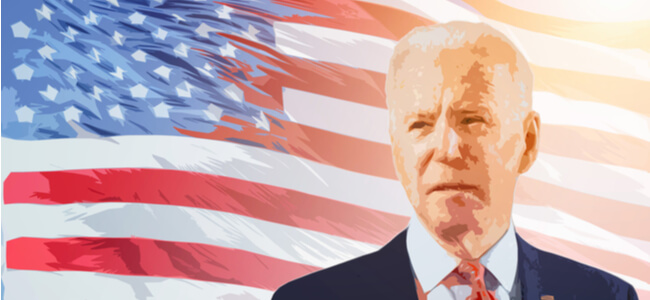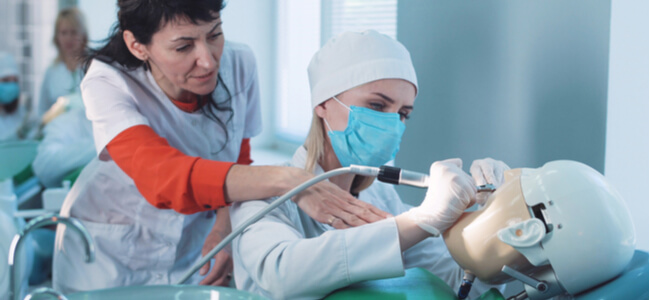How to Get a Health Professions Student Loan?

The Health Professions Student Loan (HPSL) is a subsidized low-interest government loan for undergraduate and graduate students with financial needs.
The HPSL loan is issued with government funds through the school’s financial aid office whereby the educational institution acts as the lender.
Below are the four kinds of Health Profession Loans:
- Health Professional Student Loan (HPSL)
- Loans for Disadvantaged Students (LDS)
- Primary Care Loans (PCL)
- Nursing School Loans (NSL)
The Best Student Loans For Health Professionals
Here are two of the best student loan options for health professionals:
- Sallie Mae Graduate School Loan for Health Professions: These loans are available at fixed and variable rates. You can either pay when you’re in school or defer it until you complete the course.
- The rates are designed for health Professions school needs with a 0% origination fee.
- Variable rates range from 2.50% APR to 8.20% APR while fixed-rates stretch from 5.50% APR to 10.23% APR.
- Students can apply once for funds for the entire school year and the applicable funds are provided for each term.
- Discover Student Loans: This lender offers variable and fixed rates. There isn’t any origination fee and eligible applicants access low rates as well as forbearance options.
- Zero fees required to pay loan application, origination, and late fees.
- Variable rates are 2.74% to 8.37% APR while fixed rates range from 4.99% to 9.74% APR.
- Upon earning a 3.0 GPA (or equivalent), students receive a one-time cash reward on each new Discover Student Loan.
How Do These Compare To Other Loans?
Health Professions Student Loans are different from any other federal loans for medical degrees like unsubsidized direct loans or graduate PLUS loans.
- HPSL loans have a fixed interest rate of 5.00%, whereas graduate unsubsidized loans are set at 6.08% and PLUS loans are available at 7.08%.
- Payments are not due on the loans for 12 months after graduation which is twice as long as any other federal loans.
- Health profession loans are subsidized, which means students will not have to pay any interest until the end of their grace period.
- Loans are administered by educational institutions which need to apply with the federal government after meeting the eligibility criteria. Hence, not all schools participate in the HPSL program.
- The amount the students receive depends entirely on the funding the educational institution receives.
Eligibility
Eligibility for Health Professions Student Loans depends on an individual being a citizen of the US or a permanent resident.
Demonstrating financial need is also essential and based on the attendance cost along with the financial resources available.
Again, different loans come with different requirements depending on the academic program you qualify for.
HSPL
- Health Professions Student Loans are provided to full-time students who are earning doctorate certificates in areas including dentistry, pharmacy, podiatric medicine, optometry, and veterinary medicine.
- For pharmacy degrees, a Bachelor's degree is also eligible.
- Students applying for HPSL loans also need to submit the asset and income details for their parents when filling in the health professions student loan FAFSA.
LDS
- LDS loans are provided to the students seeking a doctorate degree in categories like allopathic medicine, osteopathic medicine, dentistry, pharmacy, podiatric medicine, optometry, and veterinary medicine.
- Students must be able to demonstrate financial need to qualify for the LDS loan.
- Families with low incomes based on guidelines provided by the government poverty can apply for these loans, however, the educational institution’s financial aid office determines eligibility.
NSL
- Nursing School Loans are provided to both full-time and part-time students.
- The loan covers several types of nursing programs including an associate degree, diploma, graduate degree, and baccalaureate degree.
- To be eligible, the student needs to be registered with the selective service.
- The student should also have demonstrated financial need determined by the Free Application for Federal Student Aid (FAFSA).
- The student shouldn’t exceed the aggregate limits of the Federal Nursing Student Loan.
PCL
- Primary Care Loans are given to full-time students seeking a doctorate degree in osteopathic and allopathic medicine.
- The students applying for PCL loans must begin and end their residency in approximately 4 years after completing graduation.
- Graduates are required to practice primary care for around 10 years or until the entire loan balance is repaid based on whichever of these two scenarios happens first.
How To Go About It?
Students seeking to apply for the Health Professions Student Loan can only do so after completing the FAFSA form.
In addition, certain institutions have their own set of forms for the loan application that should accompany the FAFSA, making it absolutely imperative to check with the institution in question before applying.
Even if students are applying individually for financial aid, they need to submit financial information pertaining to their parents including income, assets, and more for loan eligibility.
Schools don’t have the authority to waive this requirement.
The only exception is when there are no surviving parents.
Bottom Line
Earning a degree in the health profession is a big undertaking on an educational level, and financing this ambition can be even more challenging.
Fortunately, specialty loans are available to students seeking financial aid when pursuing an applicable doctorate degree.
Due to their unique eligibility requirements and preferential terms, these specific loans are especially beneficial for aspiring health professionals.



